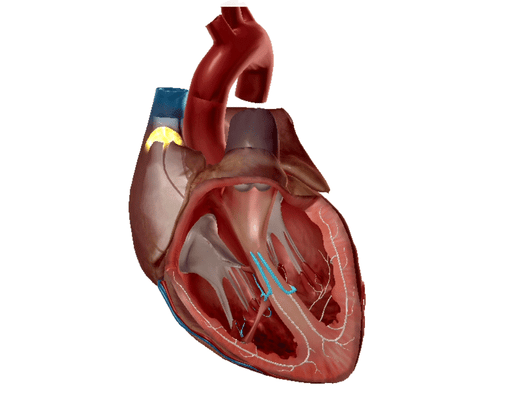Can Crystals Influence Energy? Exploring Light, Electricity & Material Properties

Crystals have captivated humanity for centuries with their beauty. While their rumored powers were once dismissed by Western science, surprising breakthroughs in the last 3-5 years have caused leading experts to take a fresh look. Cutting-edge research reveals unexpected properties and potential applications that challenge our understanding of these seemingly simple minerals.
This exploration doesn't seek to confirm metaphysical claims, but rather invites us to view crystals through a scientific lens, setting aside preconceptions. Let's dive into the fascinating world of crystal science, where established knowledge meets the frontiers of untapped potential.
We'll examine the surprising science behind crystals, from their optical properties to their exotic magnetism. Then, we'll explore how these discoveries could lead to breakthroughs in technology, medicine, and perhaps even our understanding of ourselves.
Crystals: Where Order Reigns
Crystals possess remarkable properties that distinguish them from most other solid materials. The foundation of these extraordinary characteristics lies in their highly ordered, three-dimensional lattice structures. Unlike the random arrangement of atoms in liquids or amorphous solids like glass, the atoms in a crystal form a repeating pattern that extends throughout its entire volume. This precise orderliness gives rise to the unique properties we'll explore.

1. Beyond the Visible: Crystals & The Electromagnetic Spectrum

Crystals interact with light in ways that both delight the eye and intrigue scientists. We all know the basics: transparent crystals transmit light, some refract it into rainbows, and others display unique colors or glowing properties. However, recent discoveries suggest a deeper relationship between crystals and the electromagnetic spectrum, hinting at subtle energy interactions we're only starting to understand.
Recent Findings:
- Unusual Luminescence: Research into a phenomenon called triboluminescence reveals that some crystals emit light when scratched, crushed, or subjected to pressure. While the exact mechanism isn't fully understood, it suggests ways in which crystals can transform mechanical energy into light.
- Light Manipulation: Scientists are designing crystals with precisely engineered structures, called metamaterials, that can bend, split, or focus light in ways that defy the laws of traditional optics. This has applications ranging from advanced lenses to "invisibility cloaks."
Biological Link:
Visible light is just a tiny sliver of the vast electromagnetic spectrum, which includes many different forms of electromagnetic radiation, just at different wavelengths/frequencies. Our bodies are constantly interacting with these various types of radiation, from the warmth of infrared to the radio waves that carry our cell phone signals. Could the unusual ways crystals interact with light or other subtle electromagnetic energy fields also have unforeseen effects on biological systems? Research into bioluminescence (light produced by living organisms) offers hints that complex interactions between light and cellular processes are possible, even if not fully understood.
2. Harnessing Energy: Piezoelectricity and Beyond
Piezoelectricity is the unique ability of certain crystals to generate electricity under pressure. This well-known phenomenon has long been harnessed in precision watches, medical devices, and other technologies. However, new research is pushing the boundaries of this effect and uncovering potential applications far beyond our current understanding.

Recent Findings:
- Efficiency & New Materials: Research is focused on finding new piezoelectric materials that are more efficient or generate electricity under different stimuli (heat, light, etc.). This could revolutionize energy harvesting and sensing technologies.
- Unexplained Effects: Some studies report piezoelectric-like behavior in crystals where it shouldn't theoretically occur, or under conditions where it exceeds what our current theory predicts. This suggests there may be subtleties to the piezoelectric effect that we don't yet fully grasp.
Biological Link:
Piezoelectricity is a property found in biological tissues, such as bone and collagen. Could crystals, under the right circumstances, exhibit a subtle form of piezoelectricity that interacts with our bodies in ways we haven't considered?
3. Crystals as Conduits: Electrical & Thermal Properties
Typically, we categorize crystals as insulators, conductors, or semiconductors based on how easily they allow electricity to flow. However, recent discoveries are blurring these lines and revealing ways to manipulate the electrical properties of crystals with surprising implications.
Recent Findings:
- Unexpected Conductivity: Certain crystals can become conductive under extreme pressure, or when their structure is altered at the atomic level. This challenges our understanding of how materials behave and opens up new possibilities for electronics.
- External Control: Scientists can modify the electrical properties of some crystals using light, magnetic fields, or temperature changes. This could lead to dynamically tunable electronic components or sensors that respond to their environment.

Biological Link:
Our bodies rely on the controlled flow of electrical signals for everything from nerve impulses to muscle contractions. Could the electrical properties of crystals somehow interact with these delicate systems, perhaps in ways that influence cellular signaling or other biological processes?

The ability of crystals to conduct electricity and respond to temperature changes hints at a deeper level of interaction with energy. As we delve into the realm of magnetism and the bizarre world of quantum mechanics in Part 2, we'll encounter even more puzzling phenomena. These discoveries challenge our understanding of how crystals behave and raise intriguing questions about potential applications that extend far beyond their captivating beauty.

